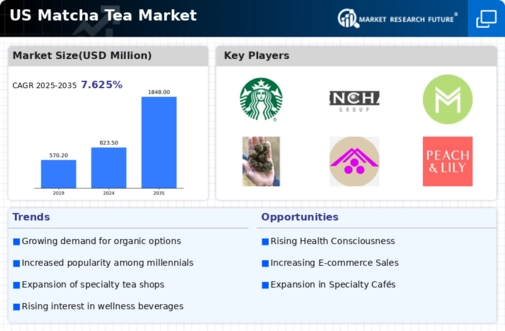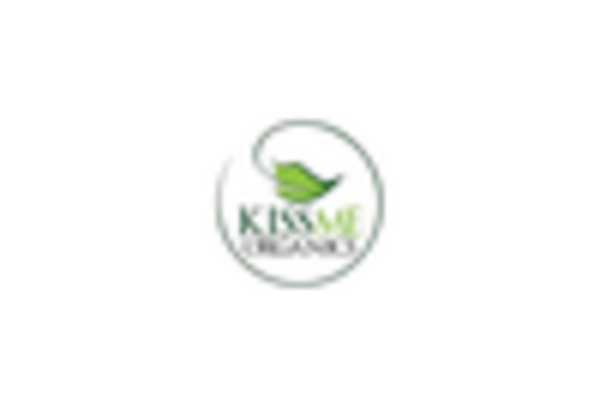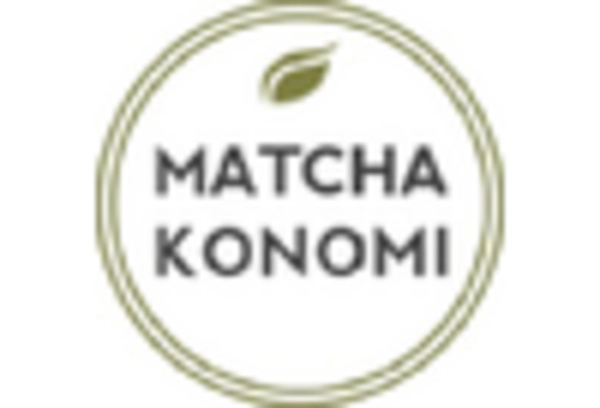Culinary Versatility
The culinary versatility of matcha tea is another significant driver influencing the matcha tea market. Its unique flavor profile allows it to be used in a variety of applications, from traditional tea ceremonies to modern culinary creations. Chefs and home cooks alike are increasingly experimenting with matcha in desserts, baked goods, and savory dishes. This trend is reflected in the rising number of matcha-infused products available in retail, which has expanded the market's reach. The matcha tea market is likely to see continued growth as consumers explore innovative ways to incorporate matcha into their diets, thereby enhancing its appeal beyond just a beverage.
Sustainability Trends
Sustainability trends are becoming increasingly relevant in the matcha tea market. Consumers are more inclined to support brands that prioritize eco-friendly practices and sustainable sourcing. Matcha, often sourced from Japan, is typically produced using traditional methods that align with sustainable agriculture principles. This focus on sustainability resonates with environmentally conscious consumers, potentially driving demand for matcha products. The matcha tea market may experience growth as brands that emphasize sustainability gain a competitive edge, appealing to a demographic that values ethical consumption. As a result, the market could see an influx of products that highlight their sustainable credentials.
Increased Availability
The increased availability of matcha tea products in various retail channels is a crucial driver for the matcha tea market. Supermarkets, specialty stores, and online platforms are expanding their offerings, making matcha more accessible to consumers. This trend is supported by the growing demand for premium and specialty teas, with matcha being a standout option. As more retailers recognize the potential of the matcha tea market, they are likely to stock a wider range of matcha products, from traditional powders to ready-to-drink beverages. This enhanced availability could lead to greater consumer awareness and ultimately drive market growth.
Social Media Influence
The influence of social media on consumer behavior is a notable driver for the matcha tea market. Platforms like Instagram and TikTok have popularized matcha, showcasing its vibrant color and aesthetic appeal. Influencers and health enthusiasts often share recipes and benefits associated with matcha, creating a buzz that attracts new consumers. This trend has led to a surge in matcha-related content, which in turn drives sales. The matcha tea market is likely to benefit from this digital word-of-mouth, as visually appealing content encourages trial and adoption among younger demographics who are active on social media.
Rising Health Consciousness
The increasing awareness of health and wellness among consumers appears to be a primary driver for the matcha tea market. As individuals seek healthier beverage options, matcha tea, known for its antioxidant properties and potential health benefits, has gained traction. According to recent data, the market for health-oriented beverages is projected to grow at a CAGR of 8.5% through 2027. This trend indicates a shift towards natural and organic products, with matcha tea being a prominent choice. The matcha tea market is likely to benefit from this growing consumer preference, as more people incorporate matcha into their daily routines, whether in lattes, smoothies, or as a standalone drink.
















